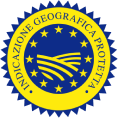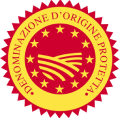Wine
Carousel_le_procedure_dettaglio
Procedures for recognition
Do you want to become part of the Denomination world?



Learn more about the procedures for recognition as a Protected Designation of Origin (PDO), Protected Geographical Indication (PGI) and Protection Consortia.

Breadcrumb
Vino Intro
How to register a PDO or PGI wine product
Two types of recognition:
Recognition as «Protected Designation of Origin» (PDO): it is a name identifying a wine product originated exclusively from grapes harvested in a specific geographical area, which determines its standards of quality and specific characteristics.
For further details, see Regulation (EU) No 1308/2013, Article 93.
In Italy, PDO wine products are labelled with the traditional DOCG and DOC abbreviations, referring to the names «Controlled and Guaranteed Denomination of Origin» and «Controlled Denomination of Origin». DOCG is reserved for wine products recognized as DOC for at least 7 consecutive years, considered valuable for the qualitative characteristics and the acquired commercial reputation.
For further details, see Law 238/2016, Articles 28 and 33.
Recognition as «Protected Geographical Indication» (PGI): it is a name identifying a wine product originated from grapes harvested in a specific geographical area influencing its’ given quality, reputation or other characteristics. At least 85% of the grape vines must be harvested and 85% of the production process must take place in the defined geographical area.
For further details, see Regulation (EU) No 1308/2013, Article 93.
In Italy, PGI wine products are labelled with the traditional IGT abbreviation, referring to the name "Typical Geographical Indication".
For further details, see Law 238/2016, Articles 28 and 33.
Both types of recognition share the same procedure, described below.
Procedure title
The procedure
Asset Publisher
An eligible party consists in a group of producers, including associations and Protection Consortia, located in a specific geographical area and involved in the production of the wine product subject of the application.
The application must be submitted to the Ministry of Agricultural, Food and Forestry Policies and to the Authority of the Region/s where the production occurs.
The application shall contain:
- the name to be protected;
- the name and the address of the applicant;
- Deed of Incorporation and, where necessary, the association’ Statute;
- the resolution of the assembly of the members of the association;
- a subscribed list of producers (in compliance with the requirements of representativeness outlined below);
- the Product Specification;
- a technical relation, entailing the linkage with the specific geographical area and the elements of the Product Specification;
- an historical relation;
- a socioeconomic relation;
- the appropriate scale map allowing the precise identification of the production area and its borders;
- the Single Document.
The producers signing the application must represent:
- application for a DOC at least 35% of the producers, harvesting in the last two years at least 35% of the vineyards area;
- application for a DOCG at least 51% of the owners of vineyards declared to the vineyard register, harvesting in the last two years at least 51% of the vineyards area subject of the application (on average);
- application for an IGT at least 20% of the producers, harvesting in the last two years at least 20% of the vineyards area subject of the application (on average);
- In the case of recognized Protection Consortia, the list subscribed by the producers may be replaced by the Minutes of the associates’ assembly proving the fulfillment of the percentage requirements. In order to reach the level of representativeness described below, the Minutes of the associates’ assembly may also be integrated with a list of signatures collected from other producers supporting the application.
For further details, see DM 7/11/2012, Article 4.
For further details, see Law 234/2016, Article 33.
A PDO or a PGI must include a Product Specification composed of the following elements:
- the name to be protected;
- the definition of the specific geographical area in question;
- the product description entailing the physical, chemical and organoleptic characters of the wine/s;
- the maximum yield of grapes per hectare and the relative yield of transformation into wine or the maximum yield of wine per hectare;
- indication of the grape variety/ies and relative percentages from which the wine/s is/are obtained;
- environmental and production conditions
- the specific oenological practices used;
- elements establishing the linkage between the product and specific geographical area in question;
- the name and the address of the Control Bodies verifying compliance with the law;
- any specific labelling rule of the product in question.
For further details, see Regulation (EU) 1308/2013, Article 94.
For further details, see Law 238/2016, Article 35.
For further details, see DM 7/11/2012, Article 5.
The national review of the application follows the stages outlined below:
- the application is examined by the Authority of the Region/s where the production occurs;
- within 90 days, the regional authorities transmit their review of the application to the Ministry of Agricultural, Food and Forestry Policies;
- within 90 days, the Ministry proceeds to the review of the application and provides the applicant and the regional authorities with observations;
- within 60 days of receipt of the communication, the applicant provides the Ministry and the regional authorities with an answer.
- In the event of lack of response or failure to address the issues subject of the observations, the Ministry informs the applicant and the regional authorities of the dismissal of the procedure for registration (by mean of specific legal act);
- in the event of a positive review of the application, the Ministry transmits the Product Specification to the applicant and the regional authorities.
At the end of the National review of the application, to verify compliance with Regulation (EU) 1151/2012, the Ministry and the involved regional authorities convene a meeting for public assessment. The applicant shall guarantee the circulation of information about the event in the specific geographical area subject of the application.
The Product Specification, as approved in the public assessment meeting, is published on the Official Journal of the Italian Republic for transparency requirements and opposition rights.
After 60 days from the publication of the Product Specification in the Official Journal of the Italian Republic and without admissible oppositions having been received, the Ministry adopts a favorable decision on registration of PDO or PGI. It informs the applicant and the regional authorities with a specific Provision. Then, the Product Specification is published online on the Ministry website and the application file is presented to the European Commission (complete of the Single Document).
In the event of an opposition, within 30 days of receipt, the Ministry assesses its admissibility and, if so, it sends the opposition to the applicant and to the regional authorities. Within 30 days of receipt of the opposition, the applicant prepares counter-arguments to be forwarded to the Ministry and to the regional authorities. Within 30 days of receipt of the counter-arguments, the Ministry reviews them. In the event of a favorable decision on registration, the Ministry updates the Product Specification subject of the application on its website and, at the same time, presents the application dossier to the European Commission. In the event of a negative decision, the Ministry rejects the application for registration.
The Commission shall scrutinize applications within six months of receipt. If observations are received during this term, the Ministry sends notice to the applicant for the resolution of the highlighted issues.
In the event of a favorable outcome of the examination, the Commission publishes in the Official Journal of the European Union the Single Document and the reference to the publication of the Product Specification.
If no reasonable objections are received within 2 months, the Commission registers the name and the Ministry publishes on its website and on the Official Journal of the Italian Republic the text of the Product Specification of the wine product subject of the application.
For further details, see DM 7/11/2012, Article 9.
For further details, see Regulation (EU) No 1308/2013, Article 97.
For further details, see Delegated Regulation 33/2019.
For further details, see Delegated Regulation 34/2019.